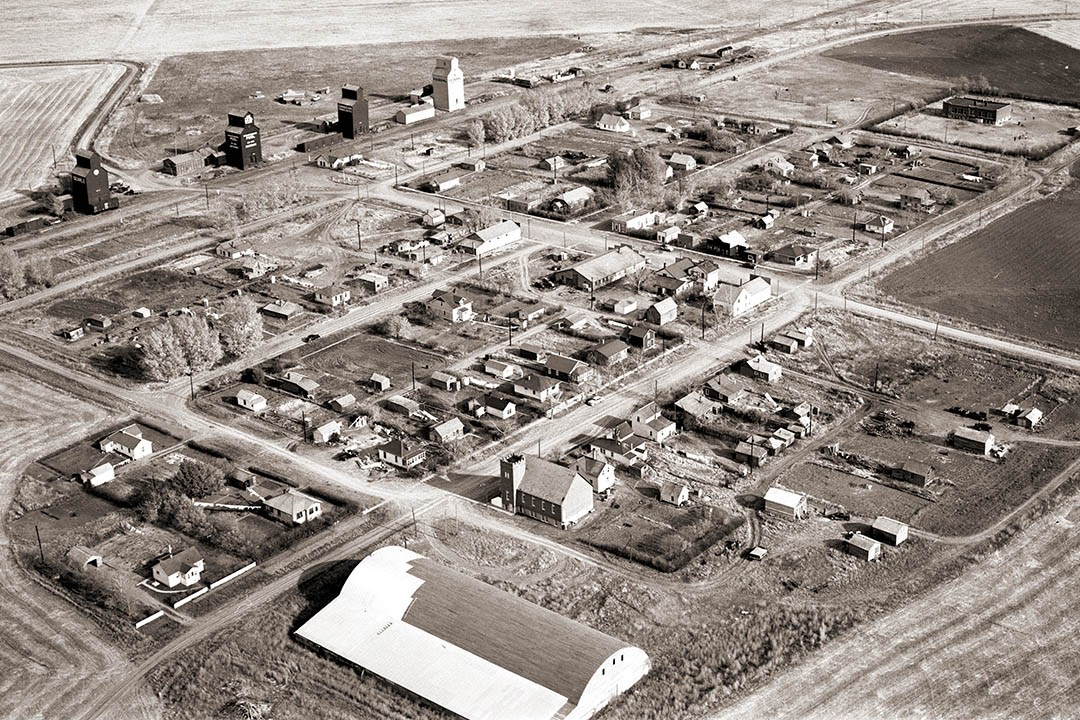
Eye on the Prairies: Snapshots from the sky
As Hugh “Howdy” McPhail took flight across the Prairies, combining his passion for aviation and photography, he surely knew how scenic the images he captured were. However, he likely could not have predicted the historical significance of his photographs.
By Sean ConroyA graduate of the University of Saskatchewan (USask), McPhail served in the Royal Air Force during the Second World War as a Lancaster Bomber pilot. He flew 28 missions and was awarded the Distinguished Flying Cross for “his unselfish, splendid record, and high degree of courage.”
After the war, McPhail returned home to Saskatchewan and didn’t know what to do with his life until his wife-to-be, Dr. Mary Kujawa (MD), also a USask alum, suggested he pursue his passion and start his own venture. In 1952 he established McPhail Airways.
“Then he came up with the crazy idea that he might be able to make some money taking aerial photographs of his beloved Prairie landscape and selling them,” his daughter Jaya Hoy said.
McPhail went on to take more than 7,000 superb aerial photographs—mostly during the 1950s—while simultaneously piloting the aircraft and snapping the photos.
These predominantly black-and-white shots of farms, towns and cities, form a unique record of post-war Canada, prior to extensive urbanization and the emergence of the industrial scale farm.
At the time, rural farm populations were in decline and the economy was in transition, moving from reliance on agriculture to developing resource industries, such as mining, oil and gas.
The photographs also document another defining characteristic of Saskatchewan–small towns and villages before, or in the midst of, becoming ghost towns. The collection includes photos of villages such as Bateman, Sask.
This now-abandoned ghost town once had a population of more than 300 in the 1920s and a variety of amenities and services, including its own power plant and street light system, along with churches, rinks, restaurants, grocery stores and a theatre.
McPhail passed away in 2001, but his family wanted his labour of love to endure and donated his collection to University Archives and Special Collections (UASC), which is now home to the Howdy McPhail Photograph Collection. More than 7,000 photographs that are quintessentially Saskatchewan tell the tale of the Prairies at this historical tipping point.
“It is an honour to have Howdy’s landmark photography as part of our permanent collections,” said Tim Hutchinson, head of UASC. “We’re grateful to the McPhail family for their continuing engagement with the collection and their generous contribution which made the digital project possible.”
Thanks to the family’s gift, the University Library’s Digital Research Centre was able to digitize the entire collection for UASC. The collection is now catalogued on a new website (mcphail.library.usask.ca), featuring a searchable database of the collection organized by date, province, town/city and municipality. It includes an interactive map that catalogues the locations where McPhail took his photos.
McPhail’s daughter takes great pride in having the collection digitized so that the public can find their family farms and hometowns, and discover an era gone by.
“I love what the pictures show about how our parents and grandparents lived; the gardens and trees planted, the architecture, the clotheslines, outhouses; all this communicating the care people took to make their homesteads beautiful,” Hoy said. “These pictures are a loving tribute to the hard work and determination of the Prairie settlers.”

